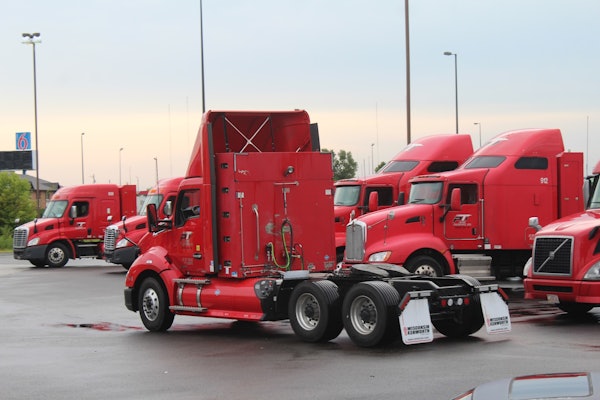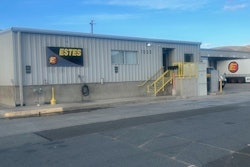Much has changed during the time fleets have used paperless, electronic logs. Twenty years ago, the first versions of the technology now known as electronic onboard recorders (EOBRs) required drivers to use portable storage devices to transfer logs from the truck to the office. Logbooks were paperless, but fleet managers had no real-time visibility of drivers’ hours-of-service (HOS) status.
Today, the benefits of EOBR technology reach far beyond the use of paperless logbooks. For many fleets, the technology plays an integral role in fleet operations through the use of intelligent onboard computing, wireless communications and advanced reporting functionality.
Through wireless connectivity, fleet managers now have instant visibility of vehicles and drivers’ HOS status, along with other safety and performance information, says Tom Flies, senior vice president of product management for Xata Corp. The company offers EOBR applications in its Xatanet wireless fleet operations system.
Fleets have the flexibility to set up their own parameters for how they wish to monitor HOS information. The moment a violation occurs, exception alerts can pop into the e-mail inbox or cell phone of a fleet manager. Fleets can use Xatanet to help prevent violations by issuing advance alerts, such as when a driver is still en route with less than one hour of available drive time remaining, Flies says. Combined with other information available in Xatanet’s Web-based reporting tools, fleets can gain new insights into the safety and performance of their operations and take immediate corrective actions, Flies says.
Another trend is the integration of HOS information into fleet dispatch, routing and load planning systems. Dispatch software providers are using PeopleNet’s XML-based open interface to capture available hours for each driver into their own software, says Bridget Fortin, product development manager for PeopleNet. Through the integration, fleet managers can ensure that drivers have the proper hours before making load assignments. Once load assignments are made, fleets can login to the PeopleNet Fleet Manager website to view a variety of reports, such as a violation detection report, and drill down into the details to see how it occurred, Fortin says.
Cadec recently launched a software-as-a-service (SaaS) platform called PowerVue. Through PowerVue’s Web interface, XML-based Web services technology and Oracle-driven business intelligence tools, customers can fully integrate HOS information with various fleet management applications, says Steve Katz, director of strategic accounts for Cadec.
One of the standard reports in PowerVue shows the available hours for each driver. Fleets can use the information as a reference tool, import it directly into their planning system, or set up automatic queries through XML Web services.
“We are making information available so it can be used more intensely,” Katz says. Cadec also recently launched a new touchsreen display, the Series 100, for use with its PowerVue system. Cadec manufactures the Series 100 hardware itself, Katz says.
Later this year, Qualcomm plans to release a new business intelligence tool that will help fleets better manage the data collected from vehicles and drivers via onboard computing, including EOBR data. With real-time connectivity to the vehicle and drivers’ HOS status, fleet managers can optimize what loads they assign to drivers based on historic averages for the runtime of a trip, says Norm Ellis, vice president and general manager of transportation and logistics for Qualcomm Enterprise Services.
The business intelligence platform from Qualcomm will help fleets combine HOS information with other driver safety information, including hard braking and lane changes, to truly understand risk rather than merely focusing on HOS compliance, Ellis says.
Vendors continue to make EOBR information more intelligent and flexible to use, but the technology also continues to become more affordable and portable. Last year, Turnpike Global Technologies launched a new feature that makes electronic logs available on Java-based cell phones and Windows mobile devices.
Turnpike uses a small vehicle-mounted computer with GPS functionality called Route Tracker. Through a link to the vehicle’s databus, Route Tracker captures odometer readings and driver/vehicle performance information. The electronic HOS application resides on a handset and communicates with Route Tracker through a robust, wireless Bluetooth connection, says Kelly Frey, Turnpike’s executive vice president of sales. Drivers login to the HOS application by entering a personal identification number, and the application in the handset is synchronized automatically with Route Tracker.
In February, Turnpike launched a Sprint product whereby Sprint customers can add Turnpike services directly to their Sprint invoice. Customers pay $35 per month to have Route Tracker’s Web-based mapping, engine diagnostics, automated IFTA reporting and electronic HOS on a Sprint handset. The handheld electronic HOS application is 100 percent compliant with DOT regulation 395.15, the company says.
Wireless communications, intelligent computing and reporting, and low-cost offerings all point to EOBR technology having a bright future in the industry. Automating paper logbooks is just the tip of the iceberg.









